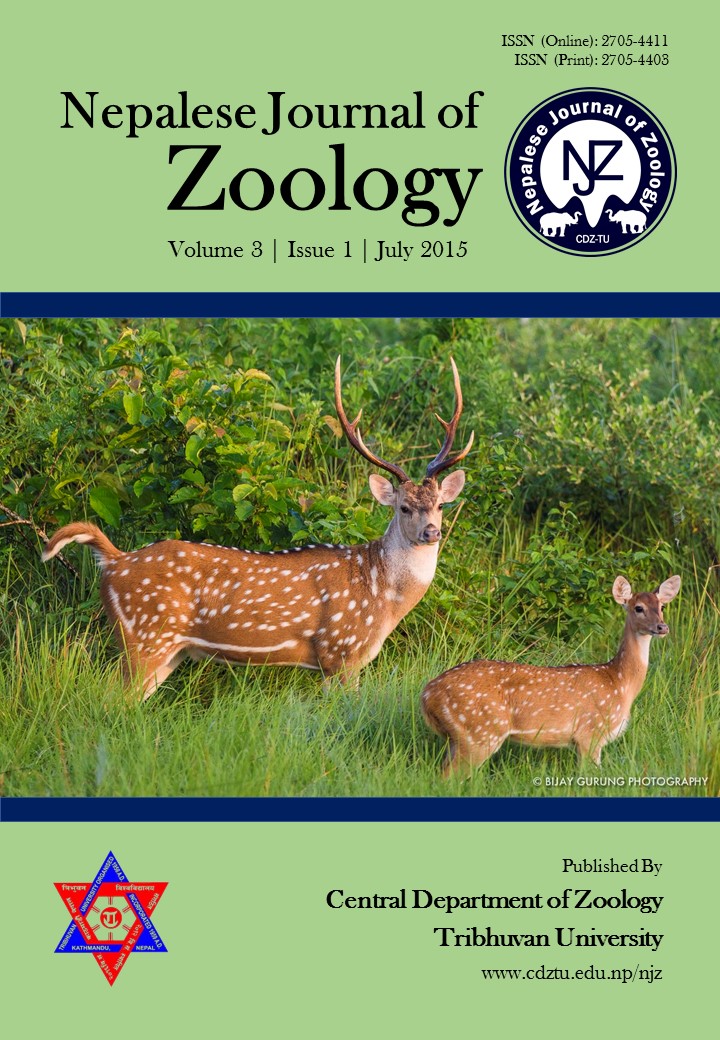Seasonal Prevalence of Gastro-Intestinal Helminth Parasites of Goats (Capra Sp.) of Shivraj Municipality-13 Kapilvastu, Nepal
DOI:
https://doi.org/10.3126/njz.v3i1.30868Keywords:
Helminth, Trematodes, Cestodes, Nematodes, Parasite, Prevalence, Sedimentation, FlotationAbstract
Goat (Capra sp.), an important source of meat is greatly affected by the helminth parasites. The current study aimed to determine the seasonal prevalence of intestinal helminthes parasites using sedimentation and flotation techniques. The overall prevalence of helminthes parasite found to be 58 (54.71%) and 86 (81.13%) for the winter and summer respectively. Fecal samples collected during winter season revealed the presence of trematodes (12.26%), cestodes (6.66%), and nematodes (35.84%) and other 6.31%. Similarly the fecal samples collected during summer season revealed presence of helminth eggs including trematodes (17.92%), cestodes (10.37%) and nematodes (52.83%) nematodes. The prevalence percentages of identified genera of trematodes were Dicrocoelium sp. (3.47%), Fasciola sp. (15.97%) and Paramphistomum sp. (2.77%). The difference in the prevalence of different genera of trematodes during winter and summer were not found statistically insignificant (χ2= 1.325, p 0.250). Among cestodes the only one genus identified with were Moniezia sp. (2.77%) and Taenia sp. (9.72%). The difference in the prevalence of different genera of cestodes during winter and summer were not found statistically insignificant (χ2= 2.186, p 0.139).
Similarly the identified nematode genera included Toxocara sp. (16.66%), Strongyl sp. (1.38%), Bunostomum (2.77%), Capillaria (4.86%), Chabertia (4.16%), Cooperia (2.08%), Heamonchus (3.47%), Oesophagostomum (8.33%), Nematodirus (0.69%), Ostertagia (1.38%), Strongyloides (6.25%), Trichuris (5.55%), Trichostrongylus (4.86%) and others (4.86%). Mixed infection was observed in out of a total of 134 (63.20%) mixed infection 54 (50.94%) and 80 (75.47%) samples showed helminthes eggs during winter and summer season were respectively detected. The difference in the prevalence of helminth parasites during winter and summer seasons were found statistically significant (χ2=6.193, P<0.013, d. f. = 1)
Downloads
Downloads
Published
How to Cite
Issue
Section
License
This license enables reusers to distribute, remix, adapt, and build upon the material in any medium or format for noncommercial purposes only, and only so long as attribution is given to the creator.

